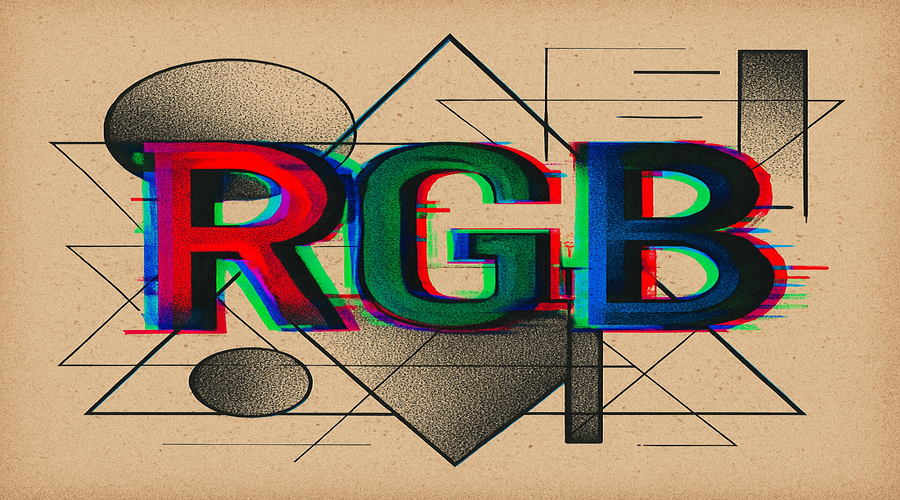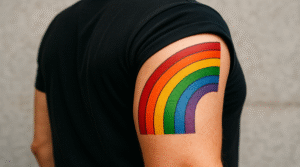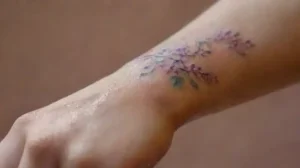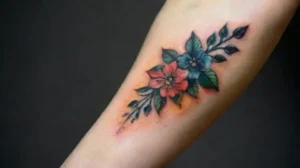In recent years, tattoo artistry has evolved beyond traditional ink and designs, embracing innovative techniques and color palettes. One of the most exciting developments is RGB tattoo art, which incorporates vibrant, digitally inspired colors into body art. This trend merges the worlds of technology and creativity, allowing artists to push the boundaries of what tattoos can look like.
With the rise of digital tools and cybersecurity-inspired aesthetics, RGB tattoo art represents a fresh blending of science and artistry. As more enthusiasts seek unique and eye-catching designs, this color trend is gaining popularity for its ability to stand out and express individuality. It marks a significant shift in how tattoos are conceptualized and executed in the modern era.
The Concept of RGB in Tattoos
RGB, which stands for Red, Green, and Blue, is the fundamental color model used in digital screens and display devices. When applied to tattoos, this model inspires a palette that mimics the luminous quality of digital screens, creating highly vibrant and dynamic visuals. The result is a tattoo style that appears almost alive before the eyes.
Tattoo artists now utilize special inks and shading techniques to replicate the glowing and overlapping effects of digital screens. The goal is to produce a design that captures the depth and richness of digital visuals, giving tattoos a luminous, high-tech appearance. This approach often results in designs that appear to pulse with energy and movement.
The use of RGB palette allows for precise color blending and layering, giving tattoo artists a broader range of creative possibilities. They can craft intricate details, gradients, and shadows that mimic digital effects, leading to a futuristic aesthetic. This innovation challenges traditional tattoo colors anchored in natural pigments, pushing the artistic envelope further.
Techniques Behind RGB Tattoos
Creating RGB-inspired tattoos requires advanced techniques and a deep understanding of color theory. Artists often start by sketching digital concepts that simulate screen displays, ensuring the final tattoo captures this luminous quality. They then select inks that closely match the bright, saturated tones associated with RGB colors.
Next, the application involves layering different shades of ink to create depth and vibrancy. Artists may use stippling, blending, and masking to achieve the glowing effects typical of digital screens. This meticulous process demands precision to avoid muddiness and preserve the clarity of each color.
Moreover, many artists incorporate neon ink effects or use UV-reactive inks to enhance the luminous quality of RGB tattoos. UV inks can glow under black lights, adding another dimension to the design. The combination of traditional tattooing with digital-inspired techniques results in a hybrid art form that is both modern and innovative.
Popular Designs and Themes
RGB tattoo art is versatile, lending itself to a wide array of designs and themes. Geometric shapes, abstract patterns, and cyberpunk motifs are particularly popular within this style. The vibrant colors and digital effects evoke a sense of futuristic intelligence and innovation.
Many enthusiasts choose to incorporate RGB effects into personal symbols or meaningful elements, creating highly personalized artwork. For example, a circuit board, digital waves, or pixel-inspired portraits can be transformed into luminous masterpieces. This style lends itself well to creating eye-catching centerpieces on the body.
Artists also explore vibrant nature-inspired designs, such as flowers, animals, or cosmic scenes, enhanced by RGB coloring. The intense hues and glowing effects make these themes feel more alive and immersive, blurring the line between digital and organic worlds. This fusion results in a new realm of creative expression.
Equipment and Ink Selection
To successfully achieve RGB tattoo effects, artists rely on specialized equipment and inks. High-quality, long-lasting inks are essential for maintaining vibrancy over time, especially for bright colors like red, green, and blue. UV-reactive inks are also popular for adding fluorescent effects that shimmer under special lights.
Tattoo machines may be adjusted to accommodate finer detail work necessary for digital-style effects. Some artists utilize digital stencils to precisely transfer complex RGB-inspired designs onto the skin. Proper equipment and ink selection are crucial to ensure the durability and brilliance of the final tattoo.
In addition, many artists invest in digital design software to plan their compositions meticulously before ink touches skin. This preparation step ensures that the digital-inspired effects will be precise and seamlessly integrated into the body artwork. It highlights the intersection of technology and craft in modern tattooing.
Challenges in RGB Tattooing
One of the main challenges is maintaining color vibrancy over time. Bright inks require proper aftercare and skin maintenance to prevent fading or distortion. As with all tattoos, exposure to sunlight and aging can diminish the luminous qualities of RGB-inspired designs.
Another challenge is the complexity involved in executing these designs. Achieving the desired digital glow effect often demands multiple layers of ink and advanced shading techniques. Artists must balance precision and creativity to prevent muddiness and ensure clarity.
Finally, not all skin types respond equally well to vibrant inks or UV-reactive pigments. Some complex designs may need frequent touch-ups to sustain the luminous, digital appearance. Despite these hurdles, skilled artists continue to innovate and perfect RGB tattoo techniques for impressive results.
Future Trends and Innovations
The future of RGB tattoo art is poised to incorporate even more technological advancements. Innovations like augmented reality (AR) could allow tattoos to interact dynamically with digital environments, making physical body art part of a larger digital ecosystem. This opens up possibilities for interactive and animated tattoos.
Furthermore, research into new, more durable, and luminous inks promises to extend the lifespan and vibrancy of RGB tattoos. UV-reactive and fluorescent inks will likely become more refined, enabling artists to create even more stunning effects that glow in various lighting conditions.
As digital influences continue to permeate all areas of art, the fusion of technology and tattooing in RGB styles is expected to grow. This evolution could redefine how body art is perceived, making it an integral part of digital culture and self-expression. The intersection promises exciting aesthetic and conceptual developments in the years ahead.






